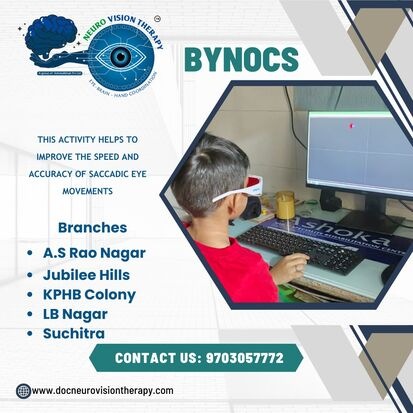
Vision therapy for autism can be a valuable tool in addressing specific visual processing difficulties that may impact a child’s functioning.
Vision therapy is a type of therapy that aims to improve vision problems, such as amblyopia (lazy eye), strabismus (crossed eyes), and other conditions that affect the way the eyes work together. It is a non-surgical treatment that involves various exercises and activities that are designed to help the eyes work better.
For children with autism, vision therapy can be particularly beneficial because many of them may have visual processing difficulties, including problems with eye tracking, focusing, and depth perception. These difficulties can contribute to academic and social challenges, and can affect their ability to learn and interact with others.
Vision therapy for autism typically involves a customized program of exercises and activities that are designed to address the specific visual processing difficulties of each child. These may include exercises to improve eye tracking and focusing skills, as well as activities that help to improve visual memory and visual processing speed. Children with autism may also benefit from vision therapy, as they may have difficulty with visual processing and visual attention.
Additionally, it’s important to understand that vision therapy typically requires a significant time commitment, with multiple sessions per week over a period of several months. It may also involve home exercises and activities to reinforce the skills learned during therapy sessions.
When it comes to vision therapy for children with autism, the goal is typically to improve their visual processing skills, eye teaming, and visual tracking abilities. Vision therapy may involve activities such as tracking moving objects, following a moving target with both eyes, and focusing on near and far objects.
Vision therapy is a treatment option that can be used to help children with amblyopia. It involves a series of exercises and activities that are designed to improve the child’s visual abilities, including eye teaming, tracking, focusing, and depth perception.
Amblyopia, commonly known as “lazy eye,” is a condition that affects approximately 2-3% of the population. It occurs when the brain and the eye are not working together properly, resulting in decreased vision in one eye.
In vision therapy for amblyopia, the child may be asked to wear a patch over their stronger eye to force the weaker eye to work harder. They may also use special glasses or lenses to help improve their visual abilities. The therapist will work with the child on exercises and activities that are designed to strengthen the weaker eye and improve its visual processing abilities.
In vision therapy for amblyopia, the child is usually asked to perform specific exercises and activities to strengthen the weak eye and improve visual acuity. These exercises may include:
Vision therapy is usually performed under the supervision of an eye doctor or vision therapist, and the length of the therapy varies depending on the severity of the condition and the child’s progress. It is important to note that vision therapy may not be effective for all children with amblyopia, and other treatment options, such as corrective lenses or surgery, may be needed in some cases.
Overall, vision therapy can be an effective treatment option for children with amblyopia and other vision problems, but it is important to consult with an eye doctor or vision therapist to determine if it is the right choice for your child.
Conclusion
Vision therapy for autism can be a valuable tool in addressing specific visual processing difficulties that may impact a child’s functioning. It is not a standalone treatment for autism, but it may complement other interventions (such as behavioral therapy, speech therapy, or occupational therapy) to improve the child’s ability to interact with the world and enhance their overall development. Parents and caregivers considering vision therapy for their child with autism should work closely with an experienced optometrist and other professionals to determine if it’s the right fit for their child.
© 2024 Crivva - Business Promotion. All rights reserved.